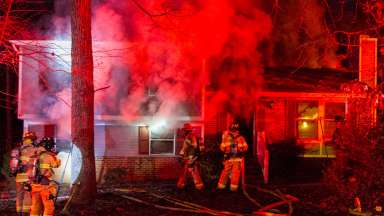Occupational cancer is the leading cause of death among firefighters in the United States, according to the International Association of Firefighters. So when North Carolina fire departments learned that the 2021-2023 state budget includes funding to help firefighters affected by the disease, they had reason to celebrate. The new Firefighter Cancer Benefit Pilot Program gives state firefighters some of the strongest cancer protections in the country, and caps off years of work to increase protections.
The North Carolina General Assembly appropriated $15 million for the two-year pilot program, said Keith Wilder, commander of the Health and Safety Compliance Division with the Raleigh Fire Department.
“Before, North Carolina was one of only two states without presumptive legislation or a program to protect their states’ firefighters from the financial devastation of occupational cancer,” he said.
The new program took North Carolina firefighters from “last in the nation to the top,” Wilder said, adding that North Carolina is the first state to enact presumptive coverage that includes all cancers.
Program Offers Variety of Benefits
The new program helps paid and volunteer firefighters and includes:
- Lump sum cancer benefit of $25,000 per cancer diagnosis (up to two diagnoses)
- Up to $12,000 in out-of-pocket medical expense reimbursement
- Disability benefit:
- For paid firefighters, 75 percent of salary or $5,000 per month for total disability
- For volunteer firefighters, $1,500 per month for total disability
The benefits are subject to a six-month waiting period and are available for no more than 36 months.
The new program is being managed by the Office of State Fire Marshal (which is part of the state Department of Insurance) and coverage is provided by the AIG insurance company.
“According to research published by the Centers for Disease Control and the National Institute for Occupational Safety and Health, firefighters have a 9-percent increased risk of a cancer diagnosis and a 14-percent increased risk of dying from cancer compared to the general population,” said Raleigh Fire Chief Herbert Griffin. “This program will greatly assist the courageous men and women who serve this state with unselfish dedication.”
Why Are Cancer Diagnoses Increasing?
Properties today are built with more synthetic materials than in the past. When there is a fire, these properties burn faster and hotter, and they release more toxic particles and gasses into the atmosphere.
The two most likely routes of exposure are absorption and inhalation. While a firefighter’s skin and airway are protected, various contaminants are microscopic. Toxic materials tend to stick on firefighters’ uniforms, and from there they can transfer to the skin.
“Also, as a rule, if you can smell it, you’re breathing it,” Wilder said. “Firefighting creates a harmful long-term exposure to carcinogenic hazards that are believed to contribute to the increasing number of firefighters diagnosed with cancer.”
Multitude of Cancer Prevention Efforts
Fire departments use a variety of procedures and equipment to keep firefighters safe, but there is still a chance of exposure.
“Cancer prevention in the fire service is a three-pronged approach,” Wilder explained. “First, there is a need to increase overall awareness and strengthen intentional cancer prevention habits. Second, operational policies must ensure we are following best practices that will help keep us safe. Finally, there is the need for new or additional equipment to execute best practices.”
Acquiring equipment requires dedicated funding. The City of Raleigh has made substantial investments in this area to support the heath and wellness of its firefighters.
“During my 22-year career, the Raleigh Fire Department has undertaken equipment purchases, procedural changes and cultural transformation to reduce the risk of cancer to our personnel,” said Captain Brian Taylor.
Examples include conducting gross decontamination on fire scenes; issuing a second set of turnout gear to all firefighters; and installing extractor washers and exhaust removal systems in stations. Raleigh firefighters have discontinued the practice of wearing their protective gear inside the stations’ living areas, and today remove their contaminated gear and shower as soon as possible after the fire.
“Also, we’re required to use self-contained respiratory protection throughout the overhaul phase of the fire,” Taylor said, adding that while many of these best practices have been recently implemented, some date back to the late 1990s.
